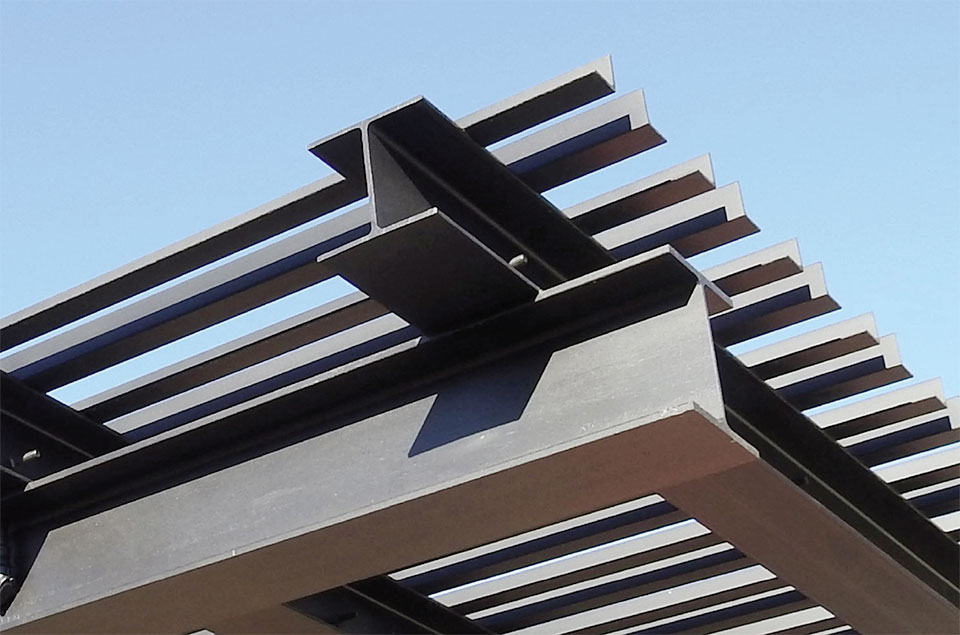From Structural to Aesthetic in the Mountain West
While steel has been an essential structural element for over a century, exposed steel has become increasingly popular in recent years. Its emerging use as a design element offers depth of expression in its application. Williams Partners Architects shares how steel ties into the cultural history of the Mountain West. Ben Young Landscape Architects expresses the intersection of the philosophical and tangible in the application of steel and emphasizes steel’s natural fit in the landscape of the Wood River Valley. Craig Maxwell, of Maxwell Structural Design Studios, explains steel’s inherent properties that allow for innovative creativity. Whether applied in structural engineering, architecture, or landscape design, steel is a significant contributor to both the aesthetic and practical construction demands of the Mountain West.
Maxwell Structural Design Studio
A Foundation of Creativity
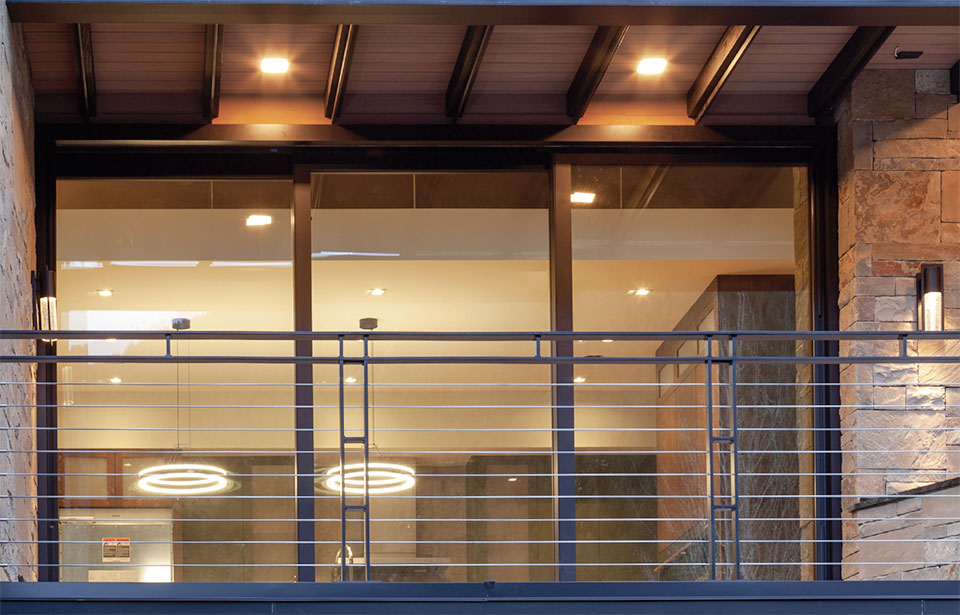
“People want large windows for the stunning vistas of our locale. Steel has become the best way to provide that span while maintaining a shallow structural assembly.”
–Craig Maxwell, Owner, Maxwell Structural Design Studio
With years spent working in the trades, practicing permaculture—a set of design principles centered on whole systems thinking—and studying traditional education in architecture and engineering, Craig Maxwell, owner of Maxwell Structural Design Studio, has built a creative well that is both deep and wide. When working with steel, a material with endless creative possibilities, Maxwell’s diverse background and in-depth understanding of the material offer him a unique perspective to bring innovative solutions to life.
Steel is a fundamental element in Sun Valley where it provides for spacious living areas, expansive windows, and long-lasting durability to the large snow loads and seismic forces prevalent in the Mountain West. “People want large windows for the stunning vistas of our locale. Steel has become the best way to provide that span while maintaining a shallow structural assembly,” explains Maxwell. He also shares steel’s utility in seismically active areas. “With steel, you can make rigid connections that withstand hundreds of cycles of seismic events, wind, and other forces, without compromising its connective integrity,” he continues.
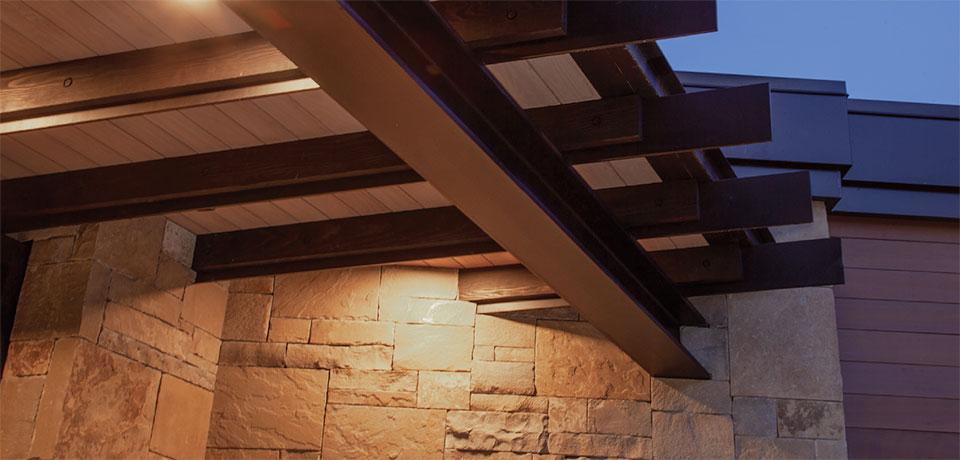
When exposed, specifying steel for both utility and aesthetics is a complex process. “There’s so much to it: the connection types, the shapes you use, how deep the steel is, how wide, how far it is from the eye, and the proportions. It’s more efficient to use a deeper and lighter element, but that look doesn’t always translate well to the architectural style,” explains Maxwell. The manner of connection between steel pieces is yet another place for stylistic and practical expression. “Welded connections are clean, but they’re much more expensive. Bolted ones are simpler, but have a more industrial look. You see welded connections most frequently in residences and bolted ones in commercial spaces,” he notes.
Maxwell shares some of the specific properties of steel to demonstrate the variations. Inch for inch, steel is much heavier than wood at 500 pounds per cubic foot compared to a Douglas fir beam at 35 pounds per cubic foot. Steel becomes comparatively lighter in application, however, because it is denser and stronger than other materials; less material is required. “It’s about the efficiency of material. With steel, you have structural shapes that are far lighter, carrying the same amount of load as wood,” explains Maxwell.
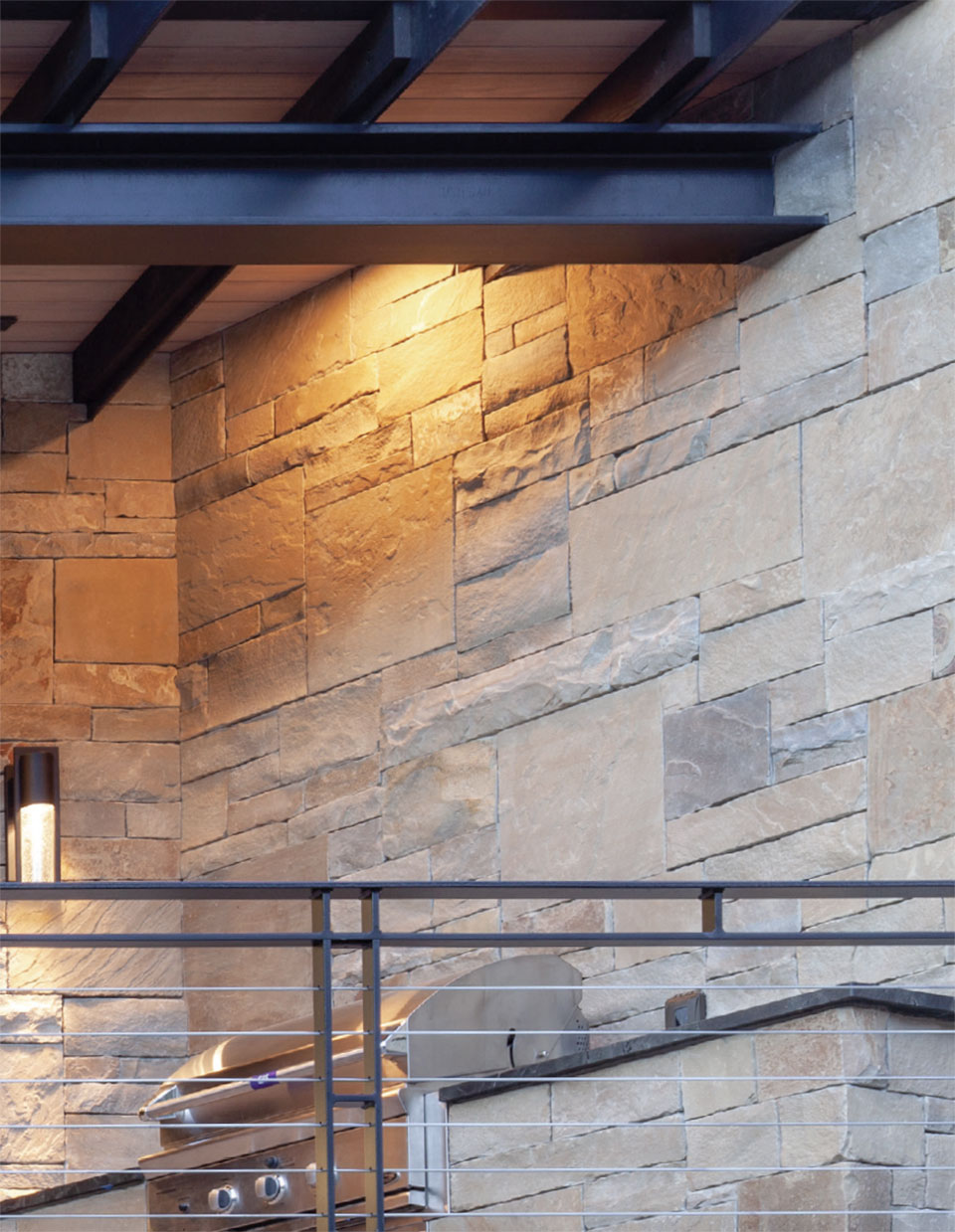
Because of its versatility and variety of shapes, steel can be used for different purposes and aesthetics. “Steel is produced in so many shapes that you can buy over the counter, as opposed to wood, which is generally rectangular, save for in joists or trusses,” Maxwell notes. I-beams, C-channels, hollow section tubes, and plate steel each have specific strengths and aesthetics. “A C-channel beam, for example, is thicker, has smaller flanges, and is great for stair stringers where you want to have one flat side. Plate steel, on the other hand, is just that—a steel plate that you can get in any thickness from a sixteenth of an inch to two inches,” Maxwell continues.
With these variations, Maxwell shares how steel can be visually light as well. He explains the details of a staircase they recently built, saying, “We did a plate steel staircase that looks like a folded piece of steel, just the tread and the rise with no stringer, like accordioned paper. It is only supported at the bottom and the top. The beauty of steel is that you can do anything. You can melt it, reshape it, cut it, weld it, and manipulate it without changing its properties,” adds Maxwell. Even when cut and welded, steel maintains its homogeneous strength, unlike other materials. “Reinforced concrete is homogeneous, but it cannot be manipulated once it cures and is so heavy and clunky. With steel, you can slice it apart and weld it back together, and the end result has the same strength as the native version,” he continues.
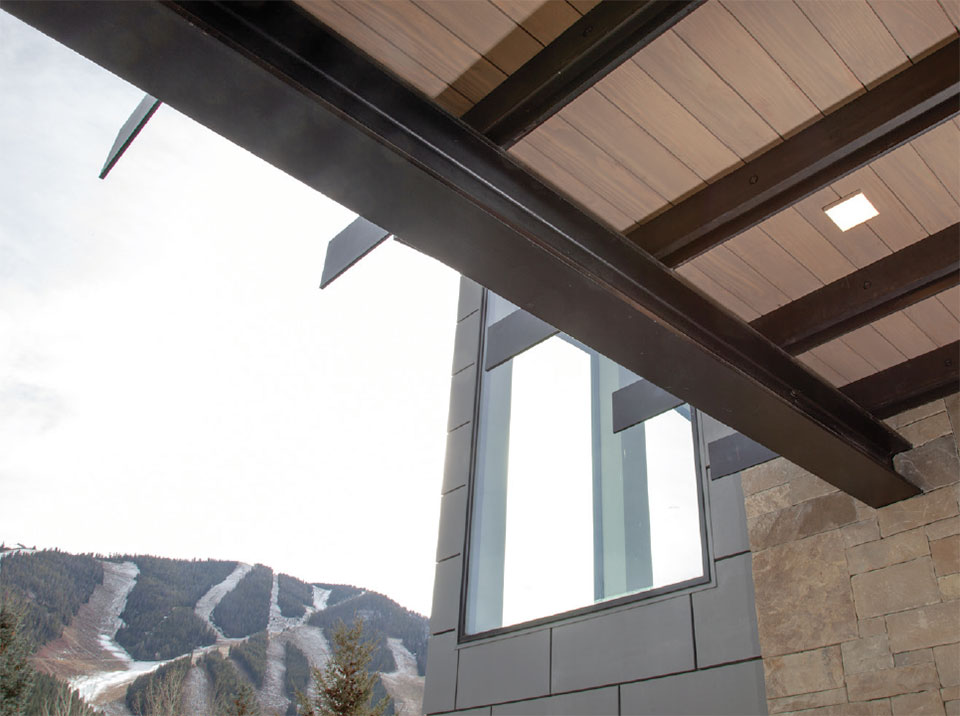
“There’s so much to it: the connection types, the shapes you use, how deep the steel is, how wide, how far it is from the eye, and the proportions. It’s more efficient to use a deeper and lighter element, but that look doesn’t always translate well to the architectural style.”
–Craig Maxwell, Owner, Maxwell Structural Design Studio
In another recent project, Maxwell elegantly solved the puzzle of maintaining the structural integrity of an existing home. The client wanted to create a more modern feel in their main living area by removing the wooden posts that supported the ridge beam, the support that carries the weight of the roof. Potentially a simple visual change, this was no easy feat structurally. “They wanted to update their home, a compartmentalized home from the ‘70s, to an open floor plan. The ridge beam is 34 feet long, carries the length of the home, and is comprised of four individual beams supported by five columns. They wanted to remove the middle three of these columns,” explains Maxwell. Common solutions, such as supporting beneath the beam with one continuous steel I-beam, or on either side with two continuous C-channels bolted together, was not feasible for this project due to the extreme weight and length of those members; it would be nearly impossible to get pieces like that inside and lifted into place. “I came up with the idea to put small steel posts below each joint of the wood ridge beam sections to replace the three columns, building a wire truss to support it, like an upside-down suspension bridge. This truss system is made up of 16 smaller pieces with a combined weight of only 435 pounds. We were able to assemble it in place, with the longest piece only seven feet-three inches long. All of the steel in the truss assembly weighed less than 15% of the 3,400-pound I-beam option, and was so much more feasible to install,” explains Maxwell.
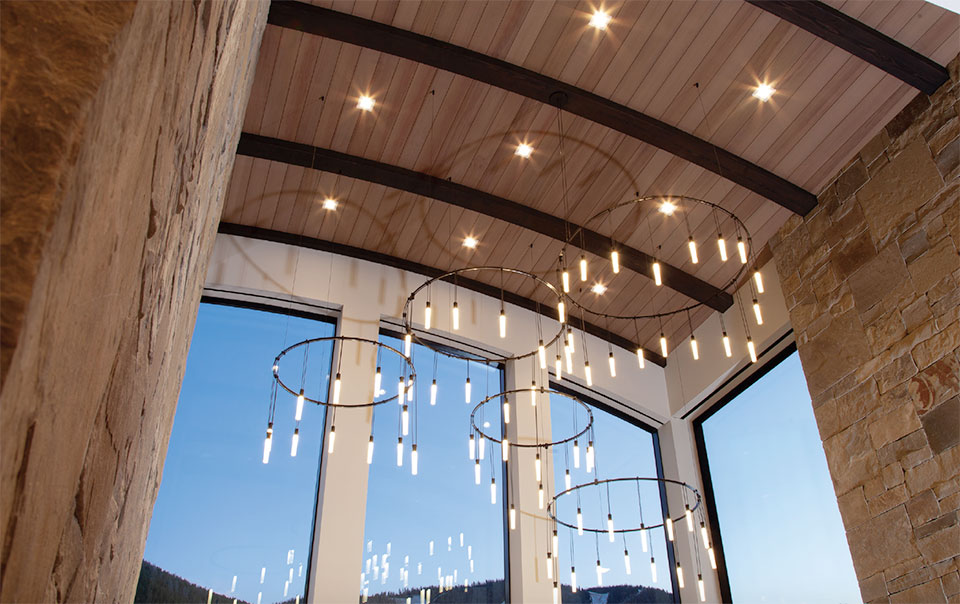
This type of problem-solving is exactly what Maxwell loves most about his work and where his diverse background shines. “I love taking something from a conceptual idea and turning it into something that can be fabricated and built from steel, becoming a structural component, architectural element, or feature in the landscape,” he shares. With so many ways to find a solution to any problem, Maxwell is able to look at it from a holistic approach, encompassing each step of the process. “I’m able to go through and think of all the hands that will work on it. With the example of the ridge beam, I think about the fabricators working in the shop and the erectors on the job site; what’s the best way to put it together? I also think about the other trades involved; how does the design affect the concrete crew and woodworkers? I think about what type of steel sections and fasteners will be used, and what the final product will look like. Finding a solution that solves for each of those aspects is so rewarding,” he continues. His enthusiasm is contagious, and bleeds through this lateral thinking. He adds in closing, “There’s always a way to figure it out; it’s never just cut it out and redo. I love that challenge of this work!”
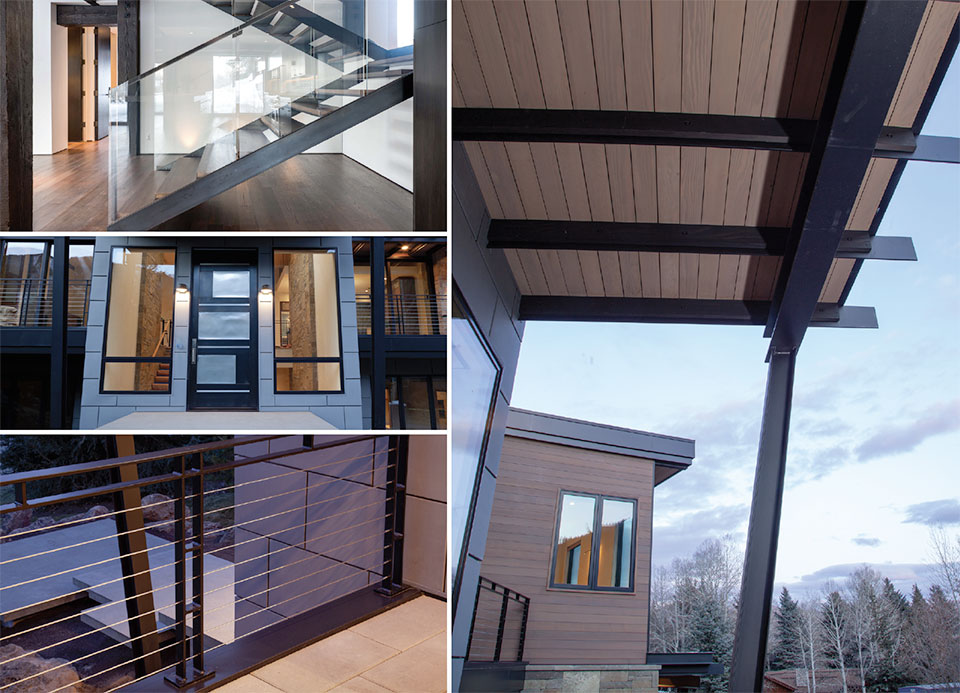
Williams Partners Architects
The Authenticity of Steel
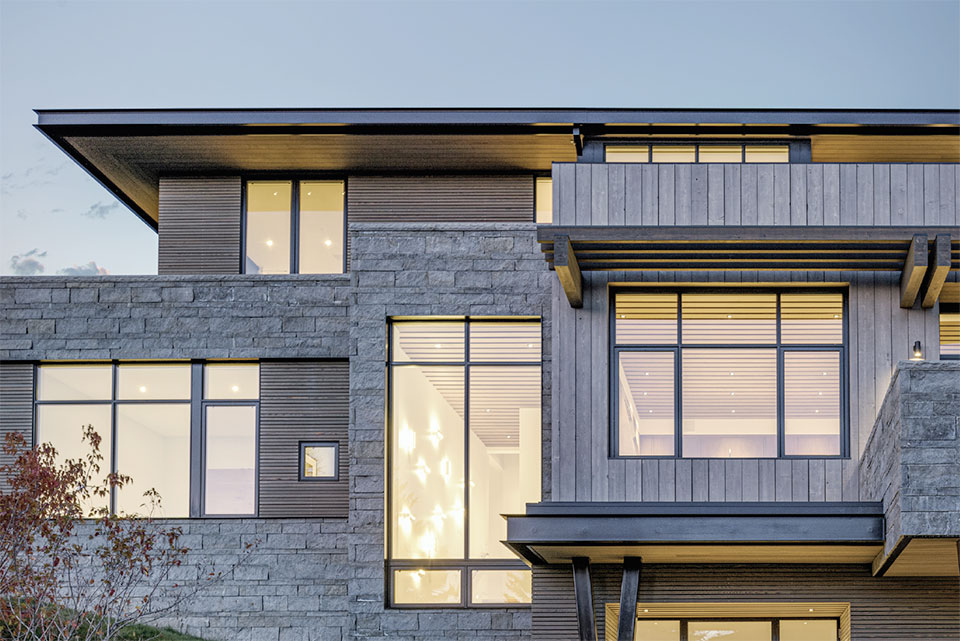
“Steel has moved from a purely utilitarian realm and is now a tangible part of spaces. We see a variety of applications, from rusted steel panels typically used as exterior cladding, to blackened stainless steel objects like handrails and hardware. In the right context, it’s now a material that enhances our daily experience.” –
–Caleb Spangenberger, AIA, Williams Partners Architects
Widespread in the mountain aesthetic today, steel pays homage to the cultural history of the Mountain West. As in other parts of the world and in other eras, it emerged from structural practicality, and now, in the West, has grown into the aesthetic realm. Williams Partners Architects, a firm that prides itself in taking the long view of design, takes a holistic perspective towards material elements as well. Williams Partners looks at steel in a way that encompasses its evolution from structural to aesthetic element—the history that has defined steel and the possibilities now offered as it steps into the realm of finer detail.
Steel is endemic to the Mountain West by function. Where open space and an arid climate give rise to harsh weather, steel maintains the structural strength for a spaciousness in design that has become the vernacular. “Especially in the mountains where snow, wind, and seismic forces are a factor, the use of steel helps us to create a sense of openness not viable with other building materials,” shares Travis Kilmer, Associate AIA.
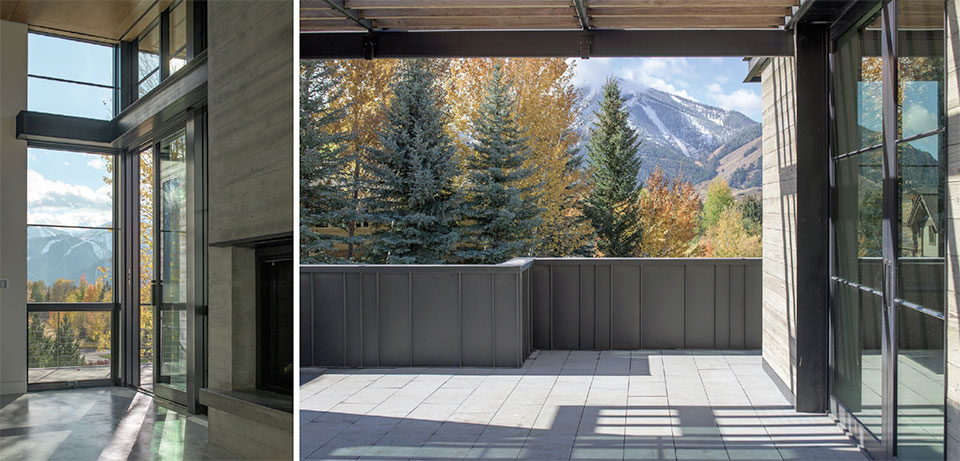
Carrying heavier loads at longer spans than any other material, steel was first utilized for its strength and rigidity. “We have used steel for many years in the structural systems of our projects for long spans, cantilevers, and rigid frames to allow for large glass areas,” shares Jeff Williams, principal at Williams Partners. Acknowledging its place in the structure was the gateway to its entry into the visible realm of buildings. Williams continues, “The big shift has been toward exposing the steel and letting it be seen as the element doing the work needed for the structure. This then led to more decorative applications.”
Caleb Spangenberger, AIA, shares the ways that steel now plays a tangible role in daily experience. Whereas it once was an essential, but invisible, element, steel is now an intentional accent. “Steel has moved from a purely utilitarian realm and is now a tangible part of spaces. We see a variety of applications, from rusted steel panels typically used as exterior cladding, to blackened stainless steel objects like handrails and hardware. In the right context, it’s now a material that enhances our daily experience,” adds Spangenberger.
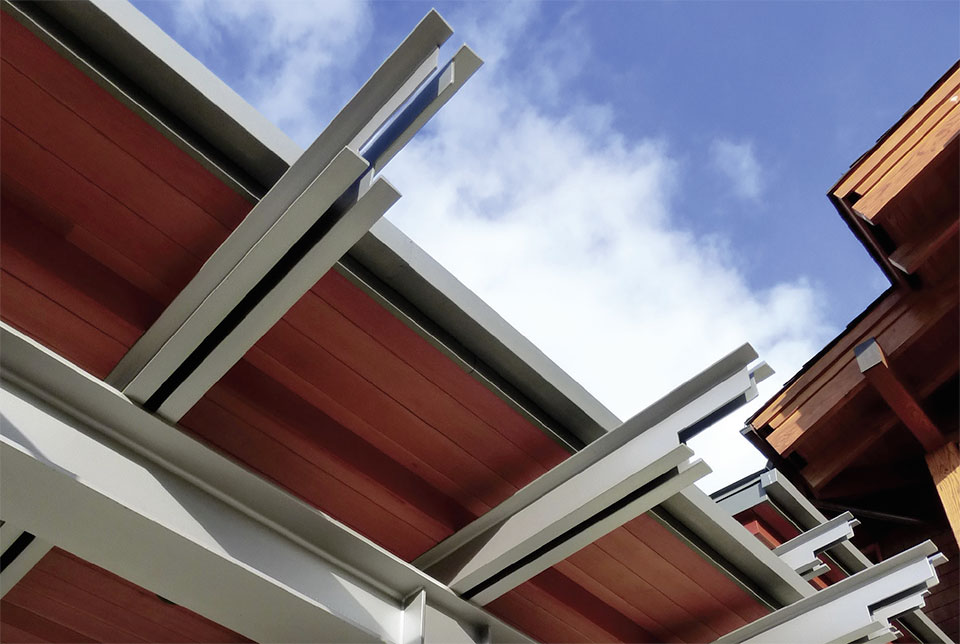
This emergence into the visible realm pays homage to the raw landscape as well as the mining structures that historically decorated the landscape. “Part of the rebirth of steel as an aesthetic element came about as architects tried to design contemporary homes that related to the old mining structures that dotted the high peaks of the Rocky Mountains. As this aesthetic developed, other uses and finishes started broadening the trend away from the mining reference to a more industrial look,” shares Williams. Contemporary design hence began to incorporate steel as a visual element relating to the rawness of the landscape as well as the practicality of the industry that brought many people to these wild places.
While some people may admire the look of steel, noticing it in trends they fancy, its beauty comes from its truth to form. Williams continues, “This has been part of the larger trend in the industry to express a greater sense of authenticity of materials and design expression. This leads to a more raw or even ‘industrial’ feel to projects; in combination with natural materials, steel gives a greater feeling of directness, or appropriateness to the mountain location.”
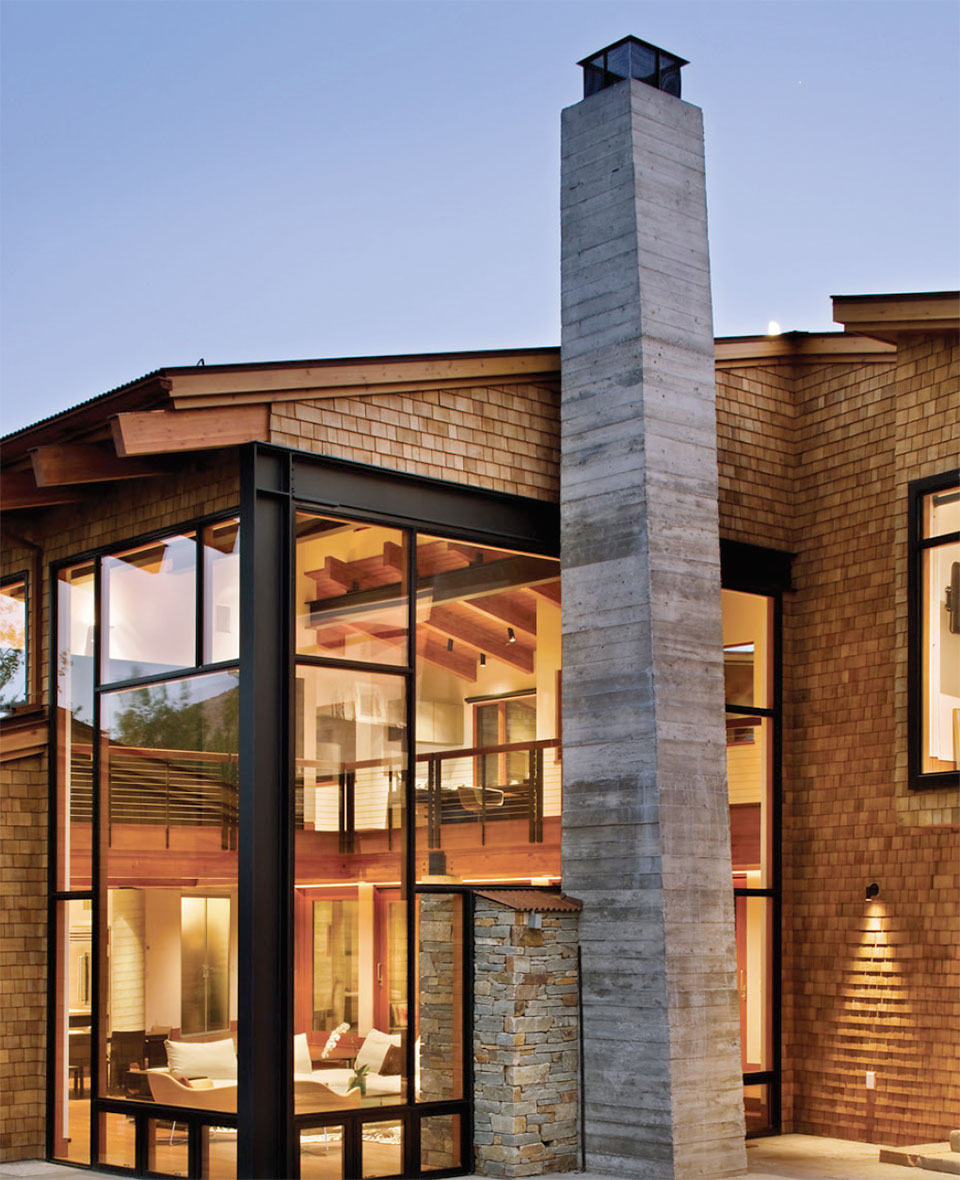
“Part of the rebirth of steel as an aesthetic element came about as architects tried to design contemporary homes that related to the old mining structures that dotted the high peaks of the Rocky Mountains.”
–Jeff Williams, Principal, Williams Partners Architects
Williams Partners recognizes the importance of material in the palette of the home, as well as its function. “The choice to use steel arises from balancing preconceived notions with contextual reference, expression of the building’s bones, and the feel of the space itself. This offers the most honest expression of the form a client is looking for,” adds Spangenberger. While steel is stunning at face value, this only comes from a deeper context that in turn adds to the feeling it offers, subconsciously and consciously.
The genesis of steel as an element we touch and feel daily—in stairs, shelves, mantles, and cladding—comes from this authenticity of expression. It has necessary spatial strengths for the Mountain West geography and it is materially appropriate to the mountain color palette. As Williams Partners takes pride in a holistic view of design, their approach to the use of steel is no exception. “We aspire to be known for responsible design, taking a holistic approach, responsible in working with the site and the environment,” notes Williams. Steel creates space that accentuates the natural environment. Steel’s application structurally and visually honors the vast spaces that draw us here to the Mountain West in the first place.
BYLA Landscape Architects
Celebrating Space with Steel
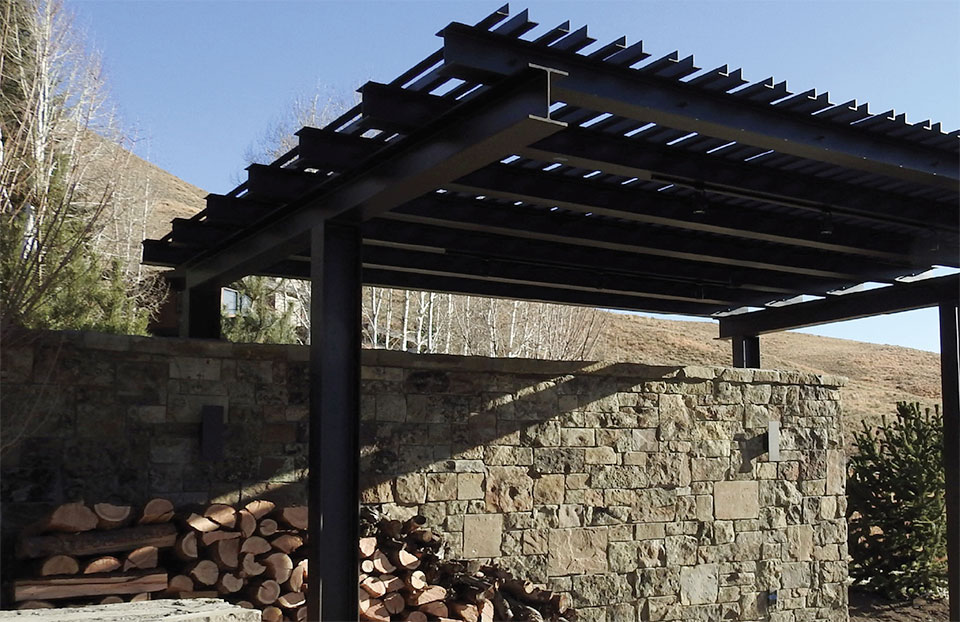
“The raw form of steel is really interesting alone. By itself, you get the sense that it’s cold and rough. But when properly placed within the landscape, it takes on characteristics that become less pretentious.”
–Chase Gouley, Principal/Owner, BYLA
As steel has become more prominent in landscape design, BYLA Landscape Architects (BYLA) enjoys the invitation to stay fresh and creative with each project. BYLA combines a philosophical understanding of steel as a material with the ways that it relates to its surroundings to create visual and tangible sensation in projects. At BYLA, the value of teamwork, amongst each other and with the artisans who manufacture the steel they use, establishes a creative environment that repeatedly breaks through the boundaries of design. Chase Gouley and Ben Young, principals and owners of BYLA, shared a glimmer of this possibility in introduction, “When steel is placed right within the landscape, it starts to celebrate and respect the surroundings, the environment that the landscape has to offer.” BYLA honors the nature of steel to celebrate the environment and architecture it relates to.
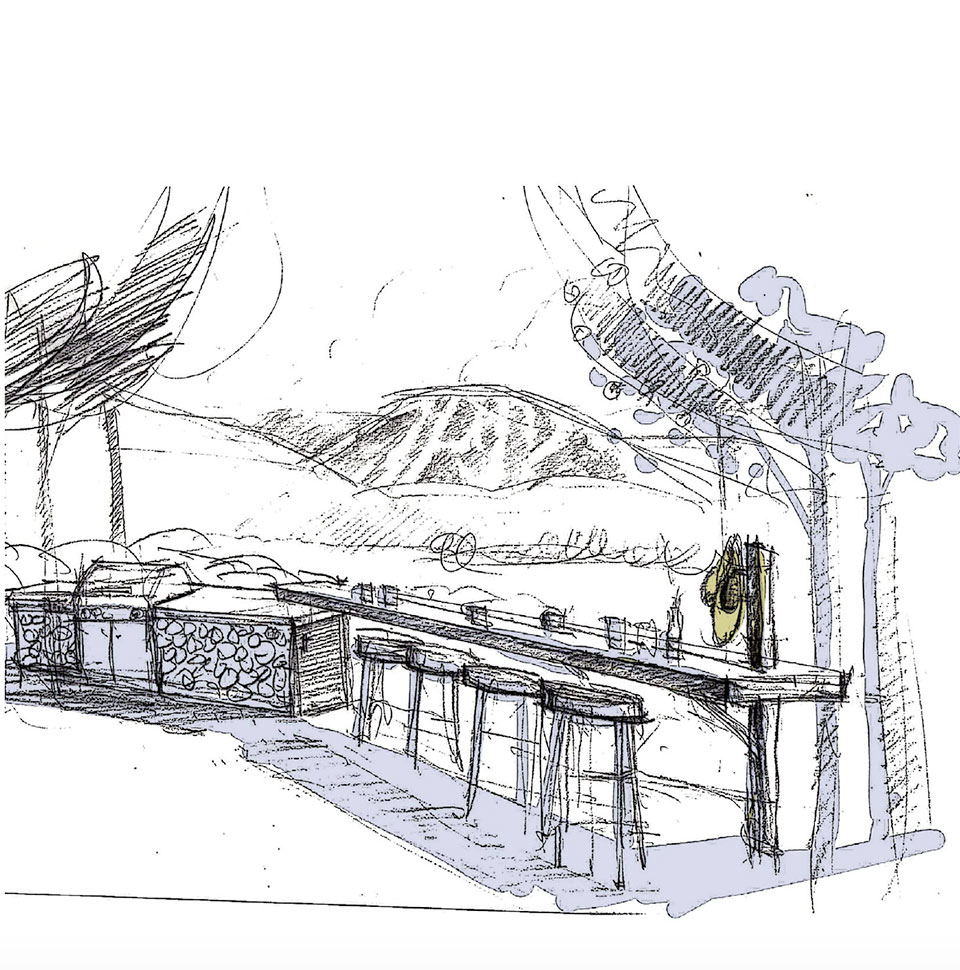
Steel’s materiality is a paradox in itself. By nature, it is rough and cold, but in application, it can transmute into something soft and inviting. “The raw form of steel is really interesting alone. By itself, you get the sense that it’s cold and rough. But when properly placed within the landscape, it takes on characteristics that become less pretentious,” shares Gouley. Depending on the goal, it is common to use steel in its variety of expressions—blackened, in its rusted form, or in the beautiful patina that comes from planning for natural weathering. Steel’s variable yet indestructible nature adds to its unique characteristics. “It is challenging to work with because it is ever-changing, and at the same time, it will outlast us,” adds Gouley.
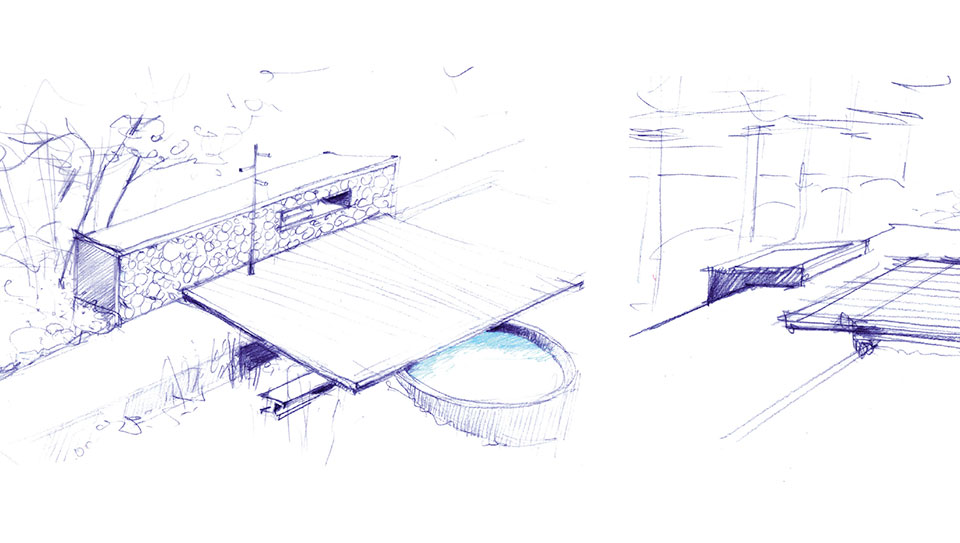
In design application, because of its mutable nature and strong presence, using steel in the ‘right’ way is imperative. As Gouley jokes in passing, “With steel, you can see when it doesn’t fit; it’s not like buying a plant, you can’t mess that up. You can put a plant in the ground, in the wrong spot, but it’s good enough that it grows and looks good. That doesn’t work with steel.” BYLA never specs in steel solely because someone likes the idea of it. “It has to have the right place and have the right sense of being,” explains Gouley.
The way that steel relates back to the home and its surroundings defines the feel. “We study the architecture of the house itself, distilling the theme and blending it into our design. We create a cohesiveness of architecture and landscape, blurring the lines between them,” adds Gouley. Gouley and Young talk about celebrations frequently, for good reason. They use steel to honor existing notes in the architecture and landscape to create connected spaces.
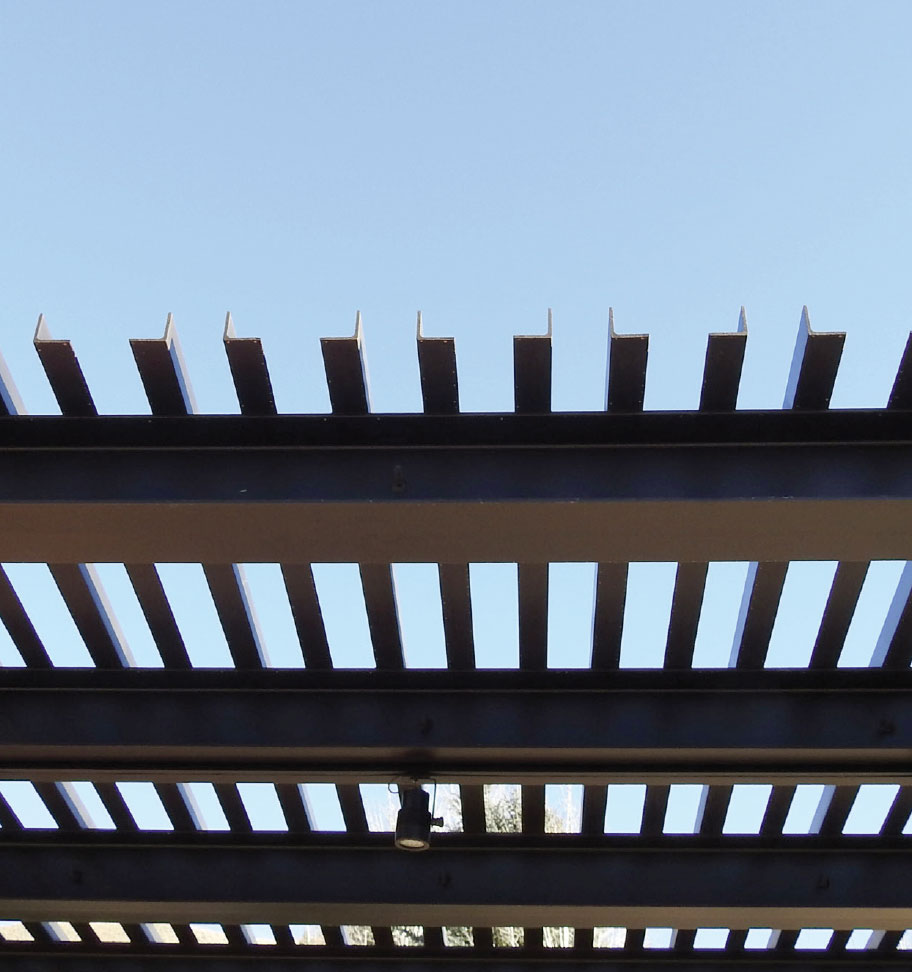
Steel’s raw nature fits amongst the expanse that defines much of the Mountain West landscape. “When you look across sage-covered hillsides dotted with rocks and boulders, the colors of raw and rusted metal synergistically merge with the tones of the landscape,” notes Young. Steel’s rugged, industrial feel can meet the starkness of the landscape to create an artistic quality due to its ultimate genesis from the earth. “Steel relates to the natural world in some sort of weird way. Even though it’s not a tree, it’s also not altered, it’s not a composite, and it’s not paint. You grind rocks, smelt them, and get metal,” continues Young. This inherent natural personality lets steel honestly morph in its applications throughout the Wood River Valley and beyond. “In that it’s of the earth, metal is true in that sense. There’s this idea that the West is more true. The rawness of the steel comes into play with that,” articulates Young.
In a recent project, BYLA brought steel’s paradoxical personality to life, creating a soft transition between two elements of a home. A client of theirs had a guest and main house connected by a covered roof and wanted to strengthen this connection. Because of the shading, they couldn’t use plants or ‘softscape’ to articulate the connection, so they did so with steel forms. “We used powder-coated steel cubes in varying heights and sizes as you walk between the two houses. It created a relief that softened the entry,” shares Gouley. He articulates how the space became so much more complex than the properties of the individual steel pieces. “We created this as a soft movement. It’s all in how they communicate back to each other,” adds Gouley.
Meaningful communication of elements in the landscape comes directly from the meaningful communication that BYLA fosters amongst their design team and amongst the fabricators they work with. “One thing we offer is a team approach. Internally in the company, we have a great team of people. We bounce ideas off each other and we like to brainstorm. This extends to the metal fabricators we work with, having a two-way relationship so when it comes to suggestions or changes to design, we come to a solution that’s a win for everyone,” shares Young.
As applications of steel have grown, so have the ways of working with it. “We’re blessed that we can share steel with so many talented artisans! Ten years ago, a welding shop would happily fix your tractor hitch or truck frame, but would balk at the idea of an intriguing steel landscape component. Today we approach them with far-fetched concepts and they’re excited to execute. Now we collaborate directly with artisans, draft ideas, and create fun components we hadn’t thought of yet,” adds Gouley.
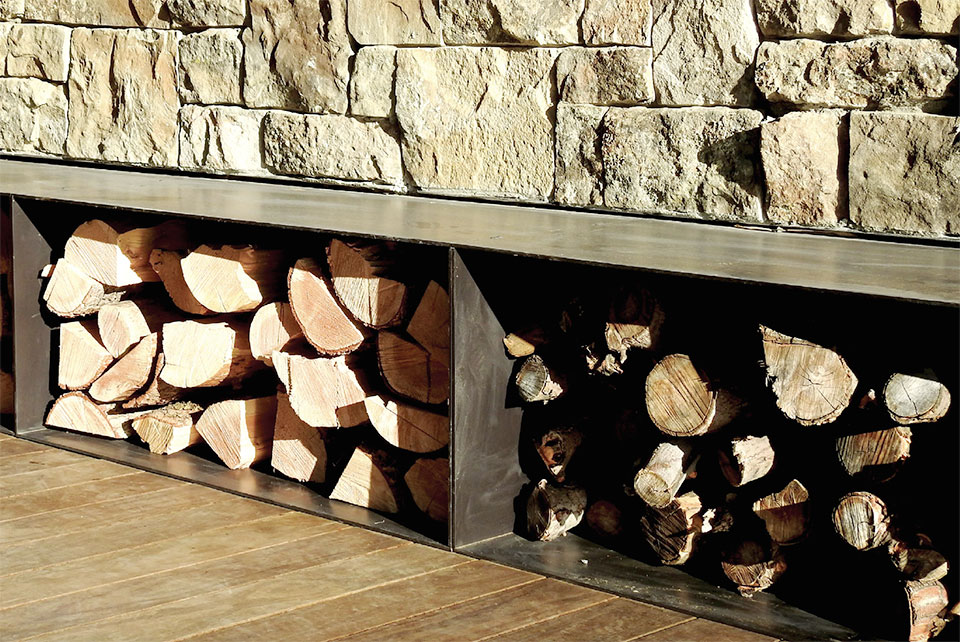
“Steel relates to the natural world in some sort of weird way. Even though it’s not a tree, it’s also not altered,
it’s not a composite, and it’s not paint. You grind rocks, smelt them, and get metal.”
–Ben Young, Principal/Owner, BYLA
Meaningful communication of elements in the landscape comes directly from the meaningful communication that BYLA fosters amongst their design team and amongst the fabricators they work with. “One thing we offer is a team approach. Internally in the company, we have a great team of people. We bounce ideas off each other and we like to brainstorm. This extends to the metal fabricators we work with, having a two-way relationship so when it comes to suggestions or changes to design, we come to a solution that’s a win for everyone,” shares Young.
As applications of steel have grown, so have the ways of working with it. “We’re blessed that we can share steel with so many talented artisans! Ten years ago, a welding shop would happily fix your tractor hitch or truck frame, but would balk at the idea of an intriguing steel landscape component. Today we approach them with far-fetched concepts and they’re excited to execute. Now we collaborate directly with artisans, draft ideas, and create fun components we hadn’t thought of yet,” adds Gouley.
BYLA uses their teamwork and their deep knowledge of steel and its relational properties to bring something uniquely fitting to each project they work on. “We strive to deliver a new concept for each project, and to have fun!” adds Gouley. In celebrating the landscape and studying form, BYLA uses steel to bring out the essential elements of the places they work in. BYLA maximizes the pure nature of steel to design spaces that transcend the individual parts comprising it. In knowing steel as a material so deeply, BYLA brings it to life in unexpected ways. Gouley adds, in closing, “Steel can be cold and raw at first glimpse, but done right, it can also be stunningly beautiful and meaningful.”
